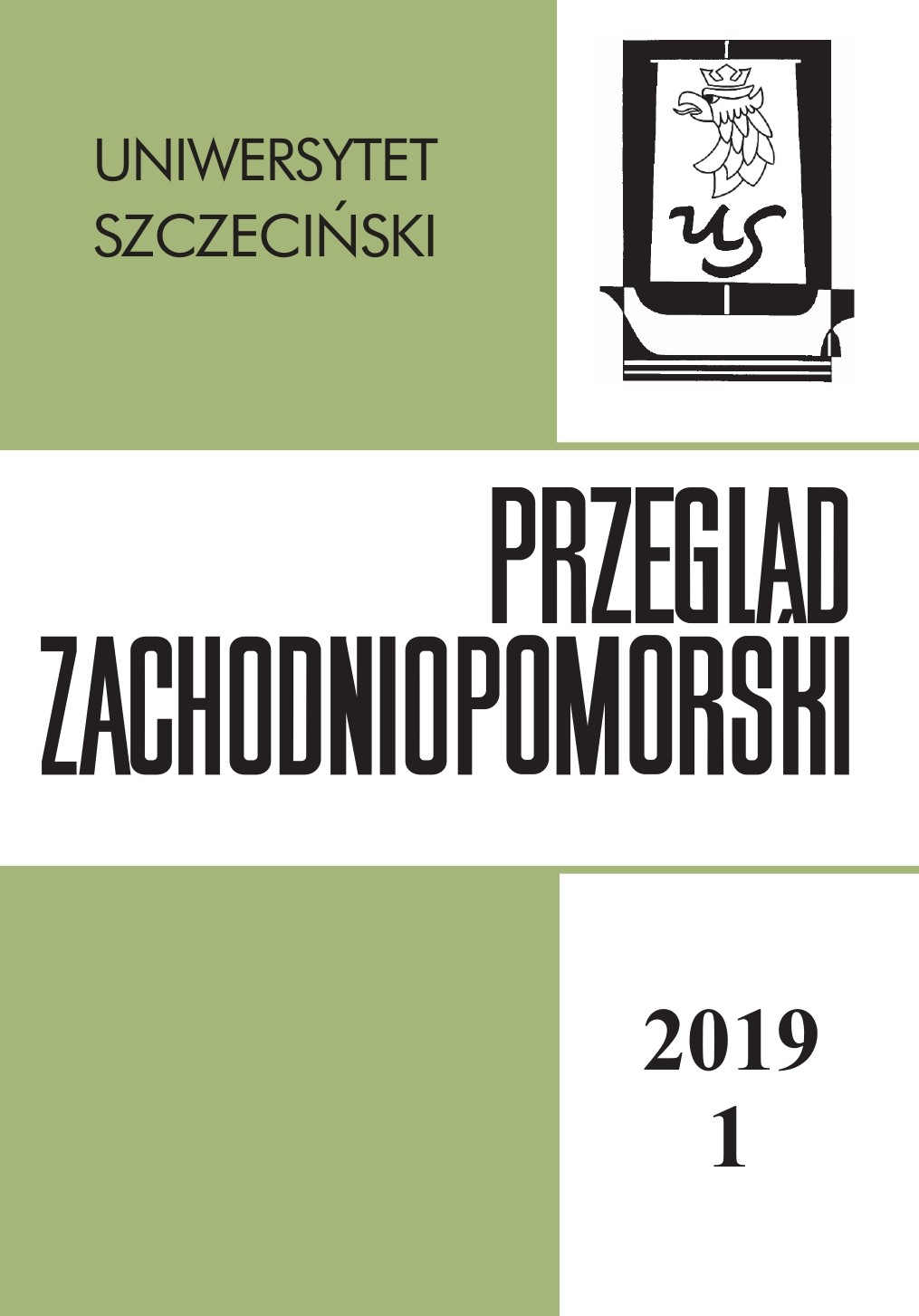Udział Kościoła w propagandzie na rzecz Ziem Odzyskanych (1945-1949)
The Participation of the Roman Catholic Church in the Propaganda of the So-Called Regained Territories in the Years 1945–1949 with a Special Attention to West Pomerania
Author(s): Marta CichockaSubject(s): Politics / Political Sciences, History, Local History / Microhistory, Recent History (1900 till today), WW II and following years (1940 - 1949)
Published by: Wydawnictwo Naukowe Uniwersytetu Szczecińskiego
Keywords: Regained Territories; propaganda of the Church; 1945–1949; ‘Tygodnik Katolicki’ [Catholic Weekly]; polonisation
Summary/Abstract: The article has been written in order to present and assess the participation of the Roman Catholic Church in the propaganda spread in the years 1945-1949 on behalf of the Regained Territories in the North and West. The Catholic Church in Poland played a conscious and intentional role in the process of polonisation of the so-called regained territories, inter alia participating in the official propaganda. In 1945 it was the common interest of Poland and the Church to permanently integrate the Western and Northern Territories with the rest of the country. One of the necessary elements to achieve that aim was to make the Poles come there, adopt and engage in the reconstruction and make them stay there for good. A lot of the State’s resources were invested in that operation in order to accomplish the plan of Stalin’s policy of faits accomplis. The occupation of the Western Territories was in accordance with the Polish raison d’État, that is why the operation was joined by academic centres and the Church. As soon as the war was over, the propaganda operation was put in motion; it was addressed to the Poles from the central voivodeships (to make them accept the border changes), to the inhabitants of the Eastern Borderlands (to make sense of their migration to the West), and to the society that was in statu nascendi in the territories which had been part of Germany before the war (so that the Poles who decided to settle there would stay there and start identifying with their new homeland). The propaganda used by the Church was different from the one used by the State and academic centres, as it was in the name of re-Christianisation of the lands that had been Protestant. The situation of West Pomerania was specific because that region was historically hardly connected with Poland and sparsely populated. Hence, the propaganda there was more intensive and made on the basis of the local Catholic press (especially ‘Tygodnik Katolicki’ and ‘Zarządzenia Administracji Apostolskiej Kamieńskiej, Lubuskiej i Prałatury Pilskiej’), which in turn is the main material for the analysis carried out here. In 1949 together with the change in the policy of the State’s authorities, the propaganda of the regained territories lost its importance. At the same time the functioning of the Church was significantly limited, including its propaganda.
Journal: Przegląd Zachodniopomorski
- Issue Year: 34/2019
- Issue No: 01
- Page Range: 55-81
- Page Count: 27
- Language: Polish

